How Water Temperature Affects Your Coffee Brew
Water temperature plays a pivotal role in transforming your coffee grounds into that perfect cup of java. When brewing coffee, the temperature directly influences extraction, impacting coffee flavor profiles and determining the richness, acidity, and aroma of your drink. The ideal temperature range typically falls between 195°F and 205°F (90°C to 96°C). If the water is too hot, it may lead to over-extraction, resulting in a bitter taste.
Conversely, water that is too cool can cause under-extraction, leaving your coffee tasting flat. Finding the right balance is essential, not only for achieving your desired taste but also for optimizing coffee brew ratios. This means adjusting the amount of coffee in relation to the water temperature can enhance the overall brewing process, ultimately crafting a cup that suits your unique palate.
Understanding the Role of Water in Coffee
Water is a fundamental element in brewing coffee and greatly influences the outcome of your brew. It serves as a solvent, dissolving the soluble compounds in coffee grounds, which creates the diverse coffee flavor profiles you enjoy. The mineral content, pH level, and purity can all alter the nuances of your coffee, making water much more than just a liquid component in the process.
A common question coffee enthusiasts ask is how water temperature affects the brew. The answer lies in its capacity to control the rate of extraction. Higher temperatures extract quicker, highlighting certain flavors and strengths, while cooler temperatures can result in a subtle or balanced profile. This underscores the importance of monitoring temperature closely during the brewing process.
Water temperature also interacts with coffee brew ratios to influence taste. By partnering the correct water temperature with precise coffee measurements, you can adjust and refine the extraction process. This synergy ensures that every cup you brew is as flavorful and aromatic as possible, tailored to suit your preferences.
Understanding the role of water in your brew empowers you as a coffee aficionado. It provides you with the awareness to experiment with variables and achieve your ideal cup. By appreciating this vital element, you enhance not only the technical precision of brewing but also the sensory experience of tasting coffee.
The Ideal Water Temperature for Brewing Coffee
Achieving the perfect brew starts with the right water temperature. For most coffee aficionados, an ideal range is between 195°F and 205°F (90°C to 96°C). Within this range, water extracts the coffee's soluble components effectively, balancing the flavors. Going beyond or below this temperature can distinctly alter coffee flavor profiles, either making them too bitter or too weak for your liking.
Did you know? Studies indicate that nearly 90% of professional baristas prefer brewing within this temperature range due to its consistency in extracting a well-rounded flavor. This statistic underscores the importance of temperature precision when you are on the journey to mastering coffee brew ratios. By understanding this, you can achieve more nuanced control over your brewing coffee.
Consider the impact of water temperature on different coffee brew methods. While traditional drip brewing benefits from mid-range temperatures, techniques like espresso require precision within the higher end of the scale to highlight bold flavors. Whether you're using a French press or an espresso machine, adjusting your water to fit the method plays a crucial role in the resulting taste.
Temperature is just one piece of the puzzle, but it is vital in achieving your desired cup. By exploring how temperature influences extraction, you give yourself an edge in refining your coffee-making skills. Every little degree counts, adding depth and character to your cup and revealing a spectrum of taste with each brew.

Exploring Different Brewing Methods and Temperatures
Each brewing method presents a unique dance between water temperature and its effect on the coffee brew. Whether you prefer a French press or an espresso, understanding how temperature intertwines with these methods can enhance your overall coffee experience. Matching the right temperature to each method ensures optimal extraction, allowing every nuance of your chosen coffee flavor profiles to shine through in your cup.
While many coffee enthusiasts believe that higher temperatures always yield stronger flavors, there's a compelling argument for experimenting with lower temperatures in brewing. Cooler water can accentuate delicate notes and bring forth unexpected subtleties, challenging the conventional approach. This method allows you to discover a broader array of flavors and adjust coffee brew ratios to your taste preferences.
Exploring different brewing techniques reveals how personal taste impacts temperature choice. With pour-over methods like Chemex, maintaining a stable temperature helps achieve clarity and brightness, while AeroPress aficionados often play within a wider temperature range for versatility. Each method benefits from slight adjustments, showcasing your role in crafting the perfect cup tailored to your mood and taste.
Engaging in the exploration of brewing methods is not just about technique; it’s about enriching your coffee ritual. By balancing temperature with method, you can create a distinctive brew that pleases your palate and captures the essence of the moment. This experimentation champions the artistry behind brewing coffee, inviting you to enjoy every sip and aroma.
Impact of Water Temperature on Flavor Profiles
The temperature of water is a key player in drawing out the myriad flavors that coffee can offer. At higher temperatures, the extraction process is faster, emphasizing bold and darker notes which some coffee lovers crave. By contrast, lower temperatures can slow extraction, allowing the more subtle, fruity, and floral notes to develop, crafting a lighter brew.
To truly appreciate the impact of water temperature on brewing coffee, you need to transition your mindset from viewing temperature as a rigid number to embracing it as a flexible tool. This shift allows you to explore how various degrees unlock different coffee flavor profiles, enhancing your ability to personalize your coffee experience.
Consider how temperature affects the perception of sweetness and acidity. At the right temperature, sweet and acidic flavors become more noticeable, creating a balanced and delightful cup. If brewed outside the optimal range, these desirable flavors may either overpower the coffee or become nearly imperceptible, impacting the enjoyment.
By understanding the role of temperature in your coffee brew, you gain the freedom to experiment with coffee brew ratios and customize each cup. Whether you seek to highlight chocolatey richness or floral complexities, adjusting the water temperature can help you express your coffee preferences through vibrant and well-rounded flavor profiles.

Troubleshooting Your Brew with Water Temperature
When your brew doesn't taste quite right, your first suspect should be the water temperature. Adjustments can rescue a bitter or bland cup by fine-tuning the extraction process. If you find bitterness overpowering, it could be a sign that the water is too hot, over-extracting the coffee. On the flip side, a flat brew often points to water that's too cool, failing to unlock the full range of coffee flavor profiles.
What most people don’t see about the art of brewing coffee is the behind-the-scenes detail of precision in temperature control, making all the difference between a satisfying brew and a disappointing one. This element of control allows you to experiment, adjusting minor variables to align coffee brew ratios with desired outcomes, revealing complexities in flavor otherwise missed.
Temperature adjustments aren't just about correcting errors; they also provide a window into refining technique. Exploring the interplay between slight temperature shifts and extraction rates opens a path to deeper coffee insights. This understanding can highlight nuances, transforming an average cup into a thoughtfully crafted experience with every slight degree change in brewing coffee.
Embracing this temperature experimentation allows you to troubleshoot and elevate each cup beyond mere trial and error. With practice, you develop an intuitive feel for how your equipment, beans, and water temperature harmonize, resulting in a consistently exceptional brew that expresses your individual taste preferences.
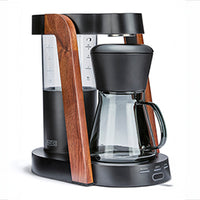 Ratio Eight S2
Ratio Eight S2
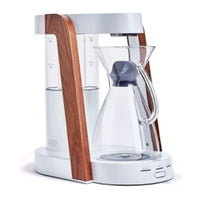 Ratio Eight Original
Ratio Eight Original
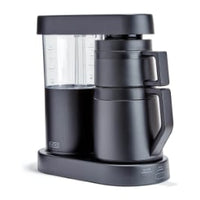 Ratio Six
Ratio Six
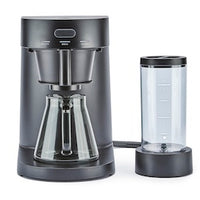 Ratio Four
Ratio Four
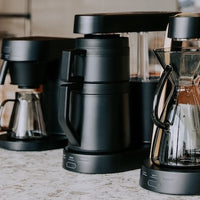 Compare Machines
Compare Machines






